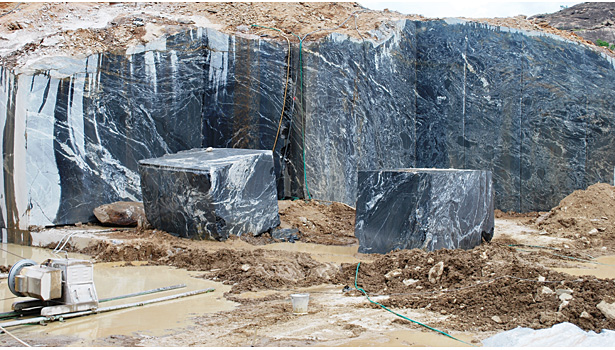Diving into of Granite Quarries in South Africa
Diving into of Granite Quarries in South Africa
Blog Article
Uncovering the Rich Background and Lasting Practices of Granite Quarrying
As we base on the precipice of uncovering the intricate tapestry of granite quarrying, a journey via time discloses not simply the physical act of drawing out stone yet also the social and historic importance woven right into the extremely fabric of this technique. From the ancient origins that laid the structure for contemporary quarrying methods to the sustainable methods that are shaping the future of this industry, each sculpt mark on granite surface areas informs a story waiting to be uncovered (granite quarries in south africa). The tradition of granite quarrying stretches far beyond mere removal; it is a testimony to human ingenuity, durability, and the long-lasting attraction of this impressive rock
Old Origins of Granite Quarrying
Going back to ancient civilizations, the method of quarrying granite has actually been an important component of human history and architectural innovation. The earliest evidence of granite quarrying dates back to ancient Egypt, where substantial pyramids and elaborate sculptures were crafted from this long lasting rock. The Egyptians used primitive devices to draw out granite blocks from quarries, showcasing the significance of this material in their huge constructions.
Progressing in history, the Greeks also made considerable contributions to the quarrying of granite. The Greeks used granite in various building marvels, such as temples and statues, showing their skill in shaping and sculpting this sturdy rock. The Romans better refined the strategies of quarrying granite, using sophisticated tools like chisels and hammers to essence and form granite for their renowned frameworks.
With the centuries, the technique of quarrying granite has actually evolved, with modern technologies enhancing effectiveness while preserving the ageless appeal of this natural stone - granite quarries in south africa. From old worlds to modern builders, the tradition of granite quarrying remains to shape our world
Advancement of Quarrying Strategies
The development of quarrying techniques has been noted by a continuous development in the direction of better efficiency and precision in drawing out granite. From the rudimentary techniques utilized by our forefathers to the sophisticated innovations made use of in modern-day quarrying operations, the industry has gone through substantial advancements. Early quarrying strategies included manual work with fundamental tools such as blades, hammers, and wedges to draw out granite blocks from the planet. As civilizations advanced, methods like fire-setting and primitive nitroglycerins were presented to assist in the extraction process.
Advancements in computer-controlled tools and 3D modeling have actually enhanced quarrying operations, leading to very little ecological effect and enhanced sustainability methods. As the need for granite continues to climb, the evolution of quarrying strategies continues to be indispensable to meeting sector requires efficiently and sustainably.
Cultural Importance of Granite
Granite holds a profound social significance across numerous worlds as a result of its long-lasting presence in building masterpieces and admired monoliths. From the stunning pyramids of Egypt to the intricate makings of the Angkor Wat temple in Cambodia, granite has actually been a material of choice for expressing magnificence and durability in cultural heritage. In old Rome, granite columns adorned temples and public structures, signifying toughness and durability. The social value of granite expands past its physical qualities; it symbolizes strength, stability, and timelessness, making it an icon of enduring traditions and practices.

Sustainable Practices in Quarrying
Amidst the abundant background of granite quarrying and its social relevance exists a growing focus on lasting methods within the sector. As ecological recognition and concerns regarding resource depletion have actually enhanced around the world, the quarrying sector has increasingly accepted sustainable methods to lessen its impact on the setting and bordering neighborhoods.

Moreover, reclamation and recovery of quarry websites post-extraction are important to sustainable practices. By restoring quarried locations to an all-natural or valuable state, such as producing wildlife environments or entertainment areas, quarriers can counter the environmental impact of their procedures and add positively to the neighborhood ecological community.
Heritage of Granite Quarrying
With a historic background steeped in workmanship and commercial progress, what withstanding influence has granite quarrying left on the landscape of modern society? The tradition of granite quarrying goes beyond plain extraction methods; it has shaped building wonders, metropolitan landscapes, and cultural heritage worldwide. The resilient nature of granite has made it a favored selection for monuments, buildings, and framework, standing as a testimony to the skill and creativity of quarry employees across generations.
Additionally, the financial impact of granite quarrying can not be overlooked. The industry proceeds to give work possibilities and drive neighborhood economic climates in regions where granite removal is common. It has also stimulated technical innovations in quarrying strategies and tools, leading to much more effective and lasting practices.
In terms of sustainability, the legacy of granite quarrying includes efforts to alleviate environmental impacts with recovery tasks and accountable source management. By balancing economic passions with ecological stewardship, the market makes every effort to make sure that future generations can remain to gain from this enduring natural source.
Verdict

Report this page